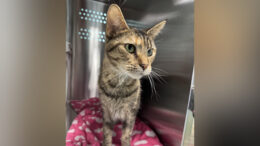By WILLIAM STEVENS – Staff writer
A report from the Centers for Disease Control and Prevention says the number of Americans getting Lyme disease from tick bites is on the rise, and an email from Nate Wardle, press secretary for the Pennsylvania Department of Health, confirms as much.
“Of states continuing to count and investigate all suspected Lyme disease cases, Pennsylvania leads the nation,” Wardle said in the email.
In Pennsylvania, the number of Lyme disease cases increased from 7,487 in 2014 to 11,443 in 2016, a jump of about 42 percent, according to Wardle.
Symptoms of Lyme disease include a bulls-eye shaped rash, fever, chills, headache, fatigue, muscle and joint aches and swollen lymph nodes, according to Wardle.
The CDC website says infection can spread to joints, the heart, and the nervous system if the disease is left untreated, and Lyme disease has been known to be fatal.
While the primary concern for Pennsylvania residents is Lyme disease, other diseases that can be contracted are Babesia, Anaplasma, Ehrlichia, Powassan virus and Rocky Mountain spotted fever, Wardle said.
According to the CDC:
– Powassan virus: Most cases occur in the Great Lakes and Northeast region. Symptoms could be fever, headache, vomiting, weakness, confusion, seizures and memory loss. In addition, there could be long-term neurological issues. Those who suffer from severe POW often require respiratory support, intravenous or medications to reduce brain swelling.
– Rocky Mountain spotted fever: Symptoms can include fever, headache, and rash. If treatment isn’t administered early with the correct antibiotic, RMSF can be deadly.
– Babesia: Portions of the Northeast and upper Midwest is where it mostly occurs. Symptoms might not be felt by those who are bitten, but people could experience “nonspecific flu-like symptoms” such as fever, chills, sweats, headache, body aches, loss of appetite, nausea or fatigue. It can be life-threatening to people who don’t have a spleen, have a weak immune system or serious health issues, or are elderly.
– Anaplasma: It can be fatal if not treated correctly. Symptoms, which begin one to two weeks after at tick bite, could be fever, headache, muscle pain, malaise, chills, nausea/abdominal pain, cough, confusion, rash (rare).
– Ehrlichia: Symptoms, which begin one to two weeks after a tick bite, could be fever, headache, chills, malaise, muscle pain, nausea/vomiting/diarrhea, confusion, conjunctival injection (red eyes), rash (in up to 60 percent of children, under 30 percent of adults). It has been known to be deadly.
However, according to Wardle, “Not all of these are prevalent in Pennsylvania.”
Powassan Virus is especially rare as only 60 cases have been reported in the U.S. over the last 10 years, including two confirmed cases in Pennsylvania, according to the state Department of Environmental Protection website.
Preventative measures encouraged by the state include:
– Use of insect repellent containing 20 percent or more DEET
– Immediately check yourself, children and pets for ticks after walking in high grass, heavily wooded areas and areas with a lot of leaves and brush.
– Properly remove any attached ticks with tweezers.
– Take a shower to help remove tricks that may have been missed.
– Carefully check your clothing and gear.
– Putting items in the dryer on high will help kill any ticks that are present.
More information is available by going to www.health.pa.gov and http://www.cdc.gov.








































